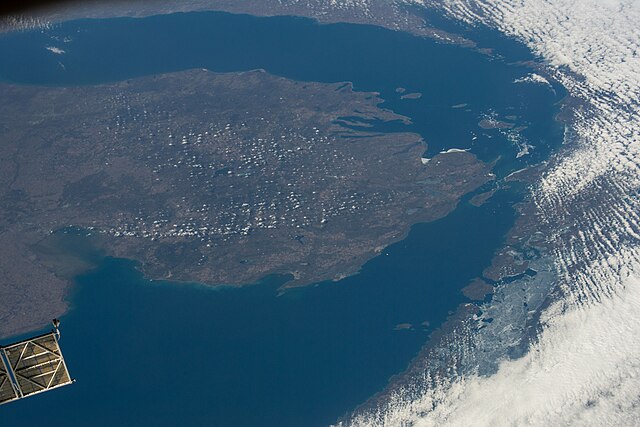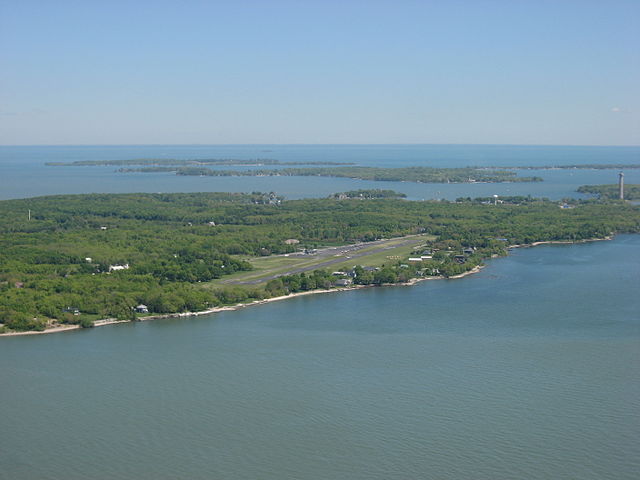Lake Superior is the largest freshwater lake in the world by surface area and the third-largest freshwater lake by volume, holding 10% of the world's surface fresh water. Located in central North America, it is the northernmost and westernmost of the Great Lakes of North America, straddling the Canada–United States border with the Canadian province of Ontario to the north and east and the U.S. states of Minnesota to the west and Michigan and Wisconsin to the south. It drains into Lake Huron via St. Marys River, then through the lower Great Lakes to the St. Lawrence River and ultimately the Atlantic Ocean.
Lake Superior taken from the International Space Station on June 6, 2019
A frozen Duluth Harbor Entrance
Lake Superior, by Walter Shirlaw
Pictographs at Lake Superior Provincial Park, Ontario
The Great Lakes, also called the Great Lakes of North America, are a series of large interconnected freshwater lakes in the east-central interior of North America that connect to the Atlantic Ocean via the Saint Lawrence River. The five lakes are Superior, Michigan, Huron, Erie, and Ontario, and they are in general on or near the Canada–United States border. Hydrologically, Michigan and Huron are a single body of water joined at the Straits of Mackinac. The Great Lakes Waterway enables modern travel and shipping by water among the lakes.
The Great Lakes seen from NASA's Aqua satellite in August 2010. From left to right: Lake Superior, Michigan, Huron, Erie, Ontario
Chicago on Lake Michigan is in the western part of the lakes megalopolis and the site of the waterway linking the lakes to the Mississippi River valley
Lake Michigan–Huron with north oriented to the right; taken on April 14, 2022, during Expedition 67 of the International Space Station. Green Bay is at the upper right and Saginaw Bay is on the left.
South Bass Island in Lake Erie








